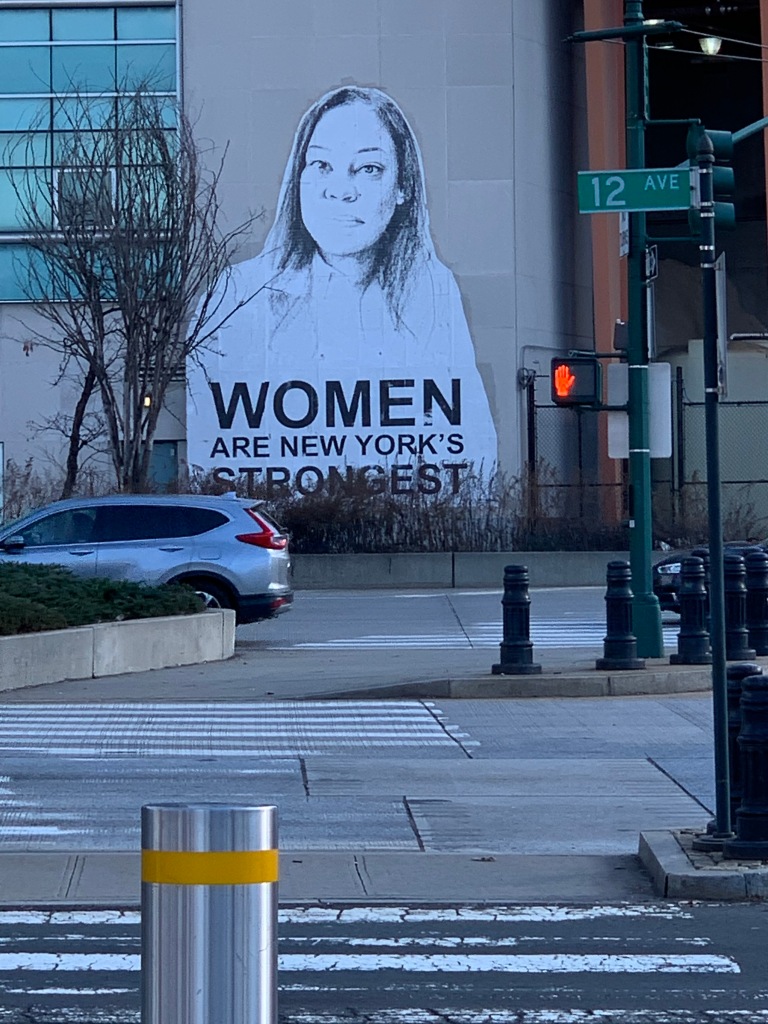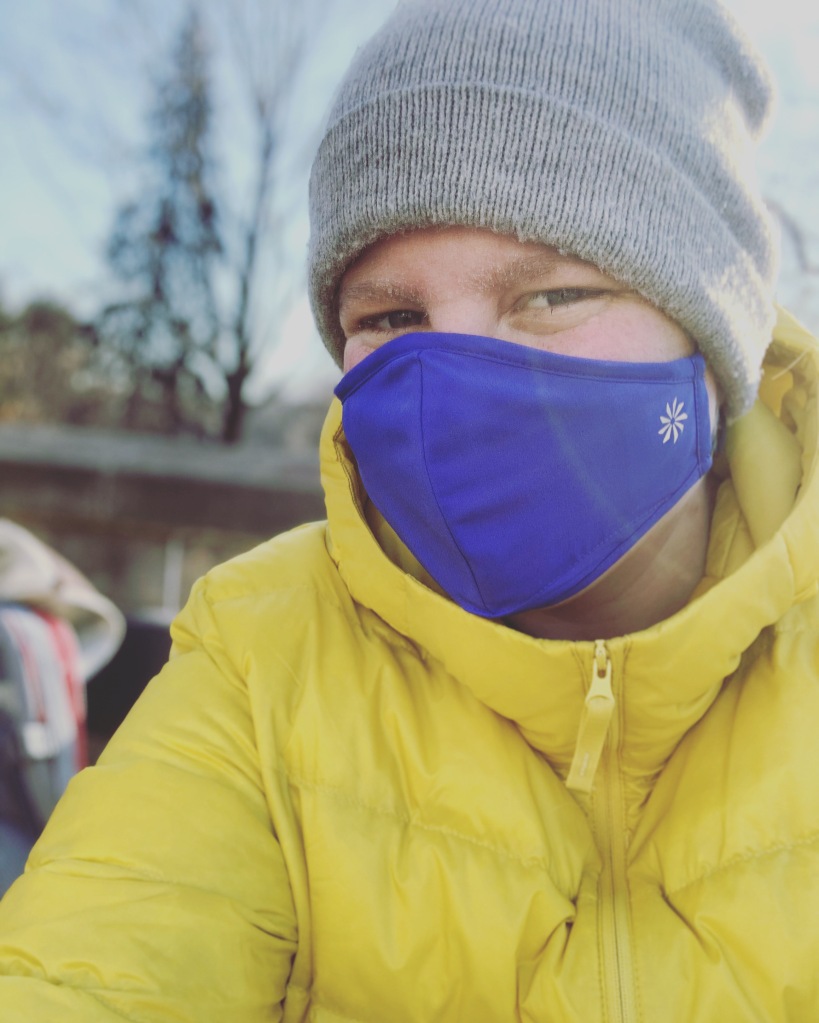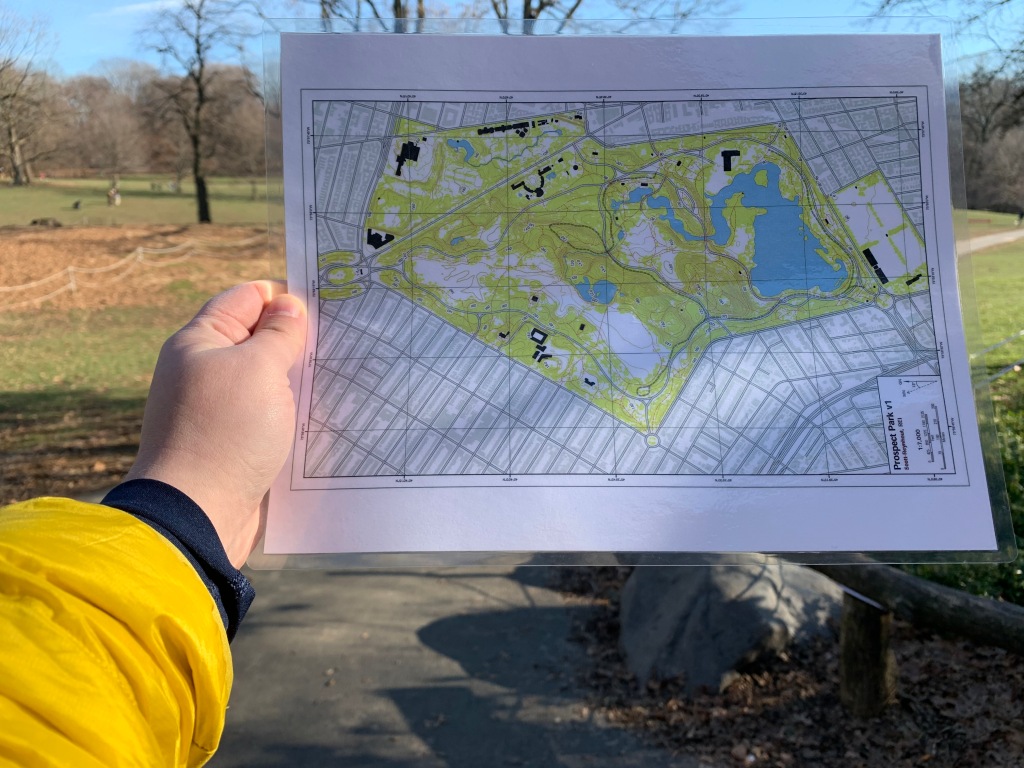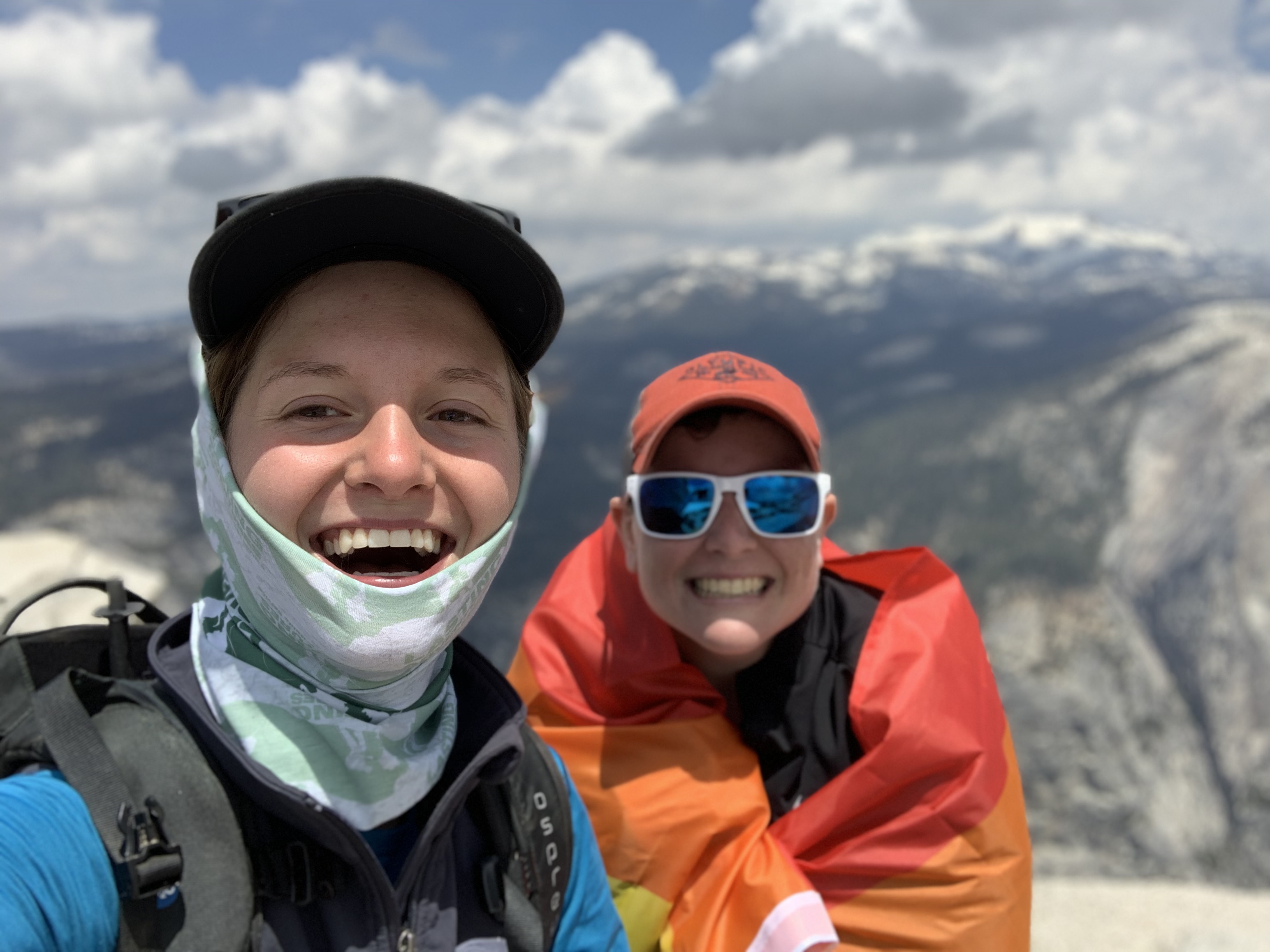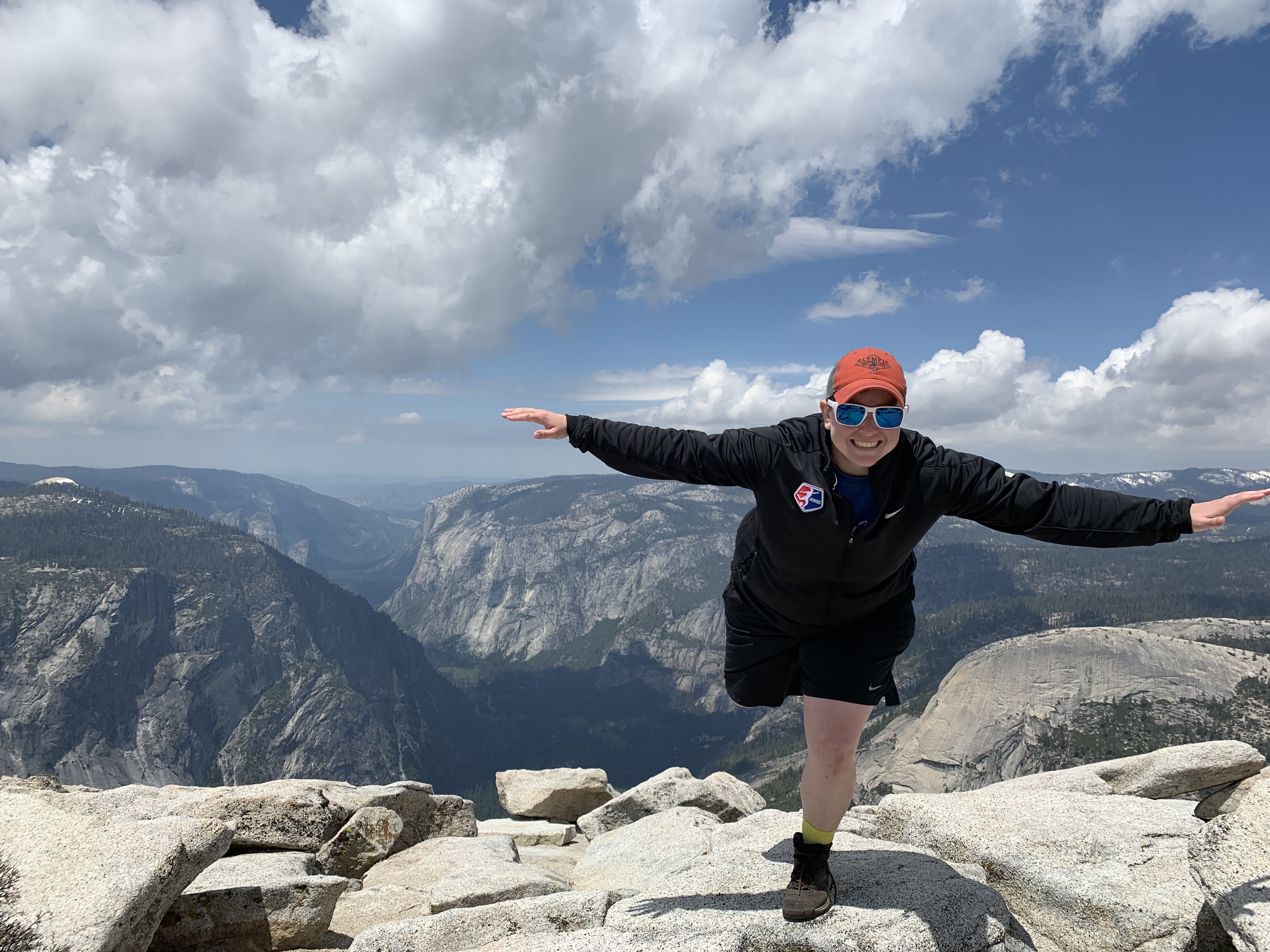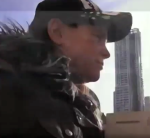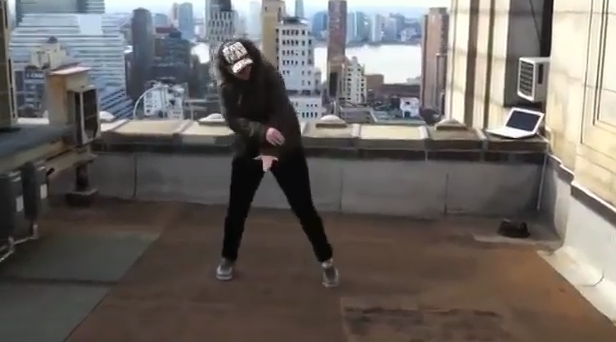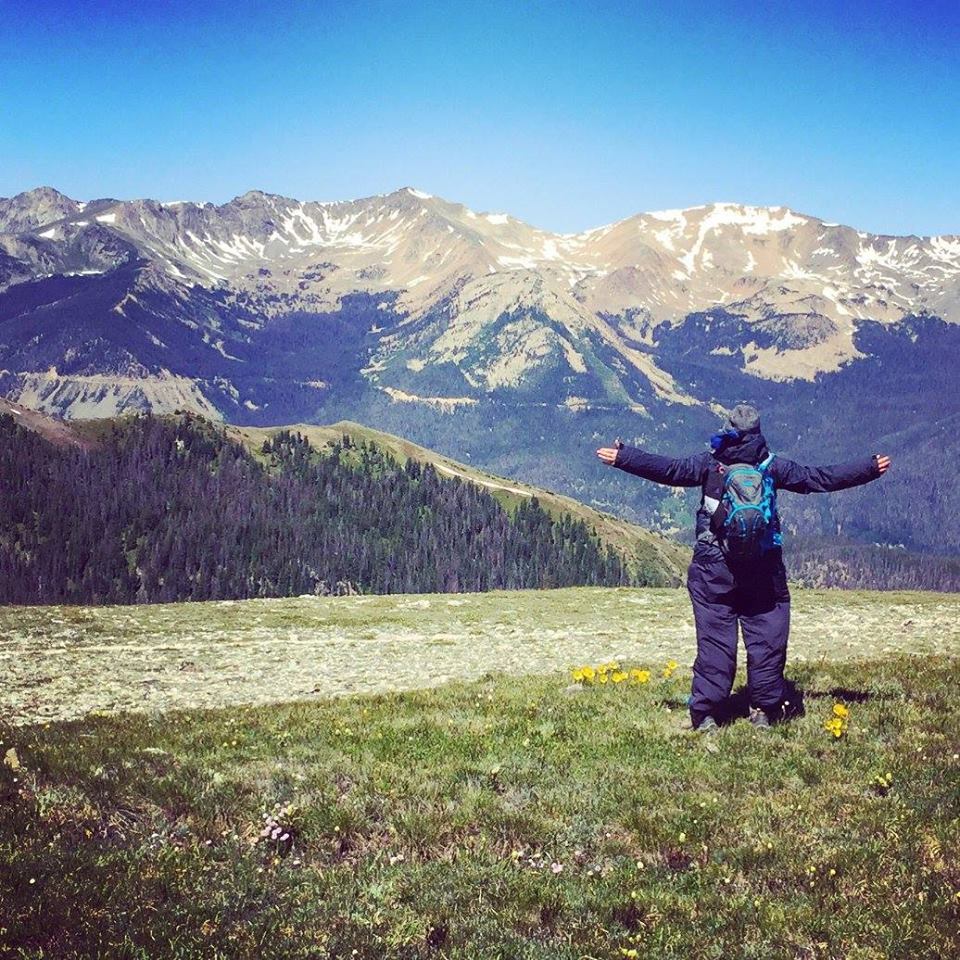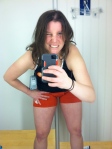“I’m in Lake Placid and it’s cold as f***. And when I say cold as f*** I mean cold as f***. The temperature gauge in the car as I’m warming up reads -3 degrees Fahrenheit. The temperature on my phone calls for -9 degrees Fahrenheit and that’s all before wind-chill. I mean it: It’s cold as f***. And of course today, of all days, I am booked to go ice climbing: an outdoor winter hobby that does require some cold-but Jesus Christ, this much? Sigh. I suppose: Through rain, sleet, snow, and negative temperatures—the Hobby Hoarder persists.” My thoughts race and then continue: “I have three pairs of pants on, multiple top layers, several pairs of gloves, hand warmers, hats, a balaclava, wool socks, and it really just doesn’t feel like enough: but what is enough in NEGATIVE Fahrenheit!”
These are the thoughts going through my mind as I’m literally waiting for the car to heat up so I can drive to my ice climbing lesson.
One night prior, my thoughts are—well–nervous thoughts. I actually don’t remember having been this nervous before a hobby since January 1, 2013–when I did another outdoor winter hobby, the Polar Bear swim. Perhaps, I just don’t like the cold, or I have a bigger fear of freezing to death than I thought: either way, the feeling ahead of ice climbing is painfully familiar: “Perhaps, the guiding service will call it cause it’s just too cold.” “Maybe the ice is just TOO icey.”
That’s of course not what happened. Instead, what happened is that on Saturday, January 30, 2021 I set out on an expedition to meet my guide EJ– a 20 year old licensed rock climbing and ice climbing guide who works for Mountain Skills Climbing Guides.
Before we go into the day and how I did (spoiler alert–I struggled); let’s go through what ice climbing is—and isn’t.
- Ice Climbing is a technical sport. Really technical.
- Ice Climbing is essentially what it sounds like: Climbing up ice–like waterfalls and ice covered rock walls.
- However, ice Climbing is NOT rock climbing. I’ve gone rock climbing, albeit once, but this is not the same sport. In rock climbing, you predominantly use your hands and your feet to find grips along the walls. In ice climbing you are outfitted with an ice axe for each hand, and crampons–basically knives on your boots. Using the ice axes and the boot knives you dig into the ice to carry yourself up the wall.
- Ice Climbing skills can be used by those who enjoy a day out in the woods just getting physical during the winter; on more technical day or overnight hikes–and ice climbing skills can be used by those who tackle more technical climbs like K2 or Everest.
- What I learned very quickly is that Ice Climbing is really difficult.
Back to the day of:
At 7:50am I arrive at a local gas station where EJ greets me with a giant smile on his face. We each open our windows and shouted hellos. “COLD NO?” I yell, and he shouts back, “IT’S GOING TO BE–ARE YOU PSYCHED?”
His energy is contagious. He clearly wants very much to be here, and to be honest, I do too, I’m just also very nervously contemplating whether I’ve worn enough layers or the right layers: if my Yeti really should be holding my warm coffee or if I’ve ruined by Yeti forever, and what a “full day of ice climbing” means. Is that like a full 8 hour day –or like til 2:00pm? (I confirm that a full day of ice climbing means til 3 or 4pm).
EJ shouts, “Okay, let’s do it.”
We roll up our windows and I see him get out of his car. He tells me that before we head to the climbing location, he’s gotta pass along some gear to me. He hands me mountaineering boots which will replace my winter hiking boots, crampons (boot knives), two ice axes, a harness and a helmet. As he hands me each one he asks me how familiar I am with each tool: I know helmets very well, am familiar with mountaineering boots, I have worn a harness a few times for rock climbing or indoor rock climbing, ziplining, etc. but my only experience with crampons and ice axes are the adventure films I’ve been watching over the last couple years–and on the shelves at REI.
When I tell him my lack of experience with ice axes and crampons, he smiles and says “that’s okay, I’ll show you.” He’s confident. This relaxes me. He’s got his shit together. Thank god.
After handing off the gear, he tells me it’s time to head to our climbing area. He sets off in his car first, and I follow closely behind. The drive is gorgeous. I’ve already done this drive a couple times since getting up to the Adirondacks one day prior, and I feel like I’m driving through a Robert Frost poem. There’s beautiful white, clean deep snow surrounding the roadways and sludgey snow and salt paving the way north and south along route 73. It’s a winter wonderland. And just like Alice’s Wonderland, I’m about to shoot through the rabbit hole to another dimension–one with giant ice walls.
EJ takes a left into a familiar parking lot. As it turns out my fiancée Zoë and I had pulled off here just one day prior to snap a photo. It’s kismet.

EJ get outs of his car, but I take my time swapping out my boots for the mountaineering ones he’s passed along. Once I’m done lacing up, I get out of the car and the wind hits me along with snow drifts. My hat and my balaclava are already dusted with snow. EJ notes that my boots probably aren’t tight enough so he instructs me to lace them up tighter, especially around the ankles, because if there’s any heel lift it can make climbing harder. I lace and relace my boots. Next, I pull on my harness and strap on my helmet. EJ notes to wait on the crampons until we are across the street, because walking on the road can dull the knives. EJ does one last thing before we cross the road–he throws a rope on my pack. This is the moment that I feel as though I’ve entered a new universe.
Once I’m geared up and have stashed a second pair of gloves in my jacket for switching out, we cross the road and head for the approach trail. The snow is deep and steep. Once we are in a safe spot, EJ instructs me to put on my crampons and shows me how. I look up to my left and it’s the first time I see the ice wall we will be tackling today. WOW, I think, but I don’t have much time to stand and admire from a distance—when it’s this cold you don’t want to be caught standing still, really, at all, and we’ve still gotta get up to the wall.
We have just a five minute approach–maybe less if you’re seasoned like EJ–but I’m intimidated. The rope on my back is heavy and I’m tripping over my crampons a bit. EJ takes a look back and I tell him not to worry! “I’m cool” “I’ll be where you are soon.” He heads the rest of the way to the nearby ice wall.
I lean over my front side and use my hands to help me up this snowy trail. I peek to see if EJ has looked back. He hasn’t “Phew…this is embarrassing,” I think to myself as I breathe heavily into my mask –which I’m wearing for both COVID protection and because as we’ve already defined: It’s cold as f***.
After I struggle up what was a small hill but felt like an Everest (ha), I meet my mountain. I’m astonished by the ice formations in front of me. I don’t know that I’ve ever been so up close and personal with this type of ice. I’ve seen Niagara Falls in the winter, but from a safe distance. Here and now I’m at the foot of the ice wall.

I’ve also now met EJ at the bottom of the pitch. He’s busy adjusting his layers which he does to keep himself moving in the cold. He explains to me how to best stay “warm” or at least…comfortable in this crazy weather:
- Keep moving.
- If you’re getting cold, put a layer on
- If you’re getting comfortable, take a layer off–cause if you get too comfortable, you will start to sweat–and sweat is bad, sweat means water, sweat in the cold means ice. Cold as f***.
- Keep eating throughout the day, snack here and there.
- If you need to pee, pee. The more pee our bladders hold, it actually steals heat from our body and we get colder.
I think of what he has just told me: “If you need to pee, pee.” It’s -3 degrees + wind chill out–and if I need to pee–I’ll need to literally pull my three pairs of pants down and squat in the snow—Perhaps I should have worn an adult diaper as one of my layers.
Once we’ve gone through the ABCs of staying warm, EJ goes over a couple more safety rules for the day. When ice climbing, everytime you make a move, you are literally changing the ice, and with that, ice tends to fly off the mountain, generally small pieces, but sometimes larger pieces. If you knock out a piece that’s larger than your fist, you should yell out to those below so they can dodge the iceball before it knocks them out. Helmets are helpful, obviously, but once ice gets big enough, the helmet can only be so helpful.
After giving me a few more safety protocols, EJ heads up to the top of the pitch. Today, we’ll be top roping, which means he’ll anchor a rope up on top of the pitch, and anchor another rope, our climbing rope to that rope. He then throws the climbing rope down the ice, but holds onto the other end. (Excuse me if this is not exactly correct—but that’s how I understand it as only top roping for my second time). The rope lands a few feet in front of me and then EJ begins his descent—rappelling down the ice face. He does this carefully and technically. It’s again different from rock rappelling where you have some give in the wall and can do little bounces off. While rock climbing, you don’t necessarily have to climb yourself down: but here on the ice, you want to use your feet and the crampons to help guide you down.
When EJ reaches the bottom he explains to me that this is what I’ll have to do when I reach the top.
Pause here for imagining me making it to the top.
I laugh….he’s so positive: but I’m not sure I’m going to make it to the top of this mountain today. It looks daunting and far. But I like his attitude.
The next step is to learn how to use the ice axes. EJ shows me how to use them including:
- The correct form for holding the axe and then also sending the axe into the ice.
- Where to try and aim for in the ice and where to avoid.
He then shows me how to appropriately use my crampons:
- Stay shoulder width apart, try not to get too narrow, but always want to keep your feet vertically close to the same level, and you really need to kick to get your crampon into the ice.
- He also shows me the right form for kicking to avoid
- 1. Kneeing an ice bulge and returning home with a bruise, and
- 2. So you really get the appropriate footing on the wall.
EJ takes a couple steps on the wall to demonstrate. As I go to kick my foot into the wall, he stops me. One more big rule: Do not ice climb without being roped in.
So now it’s time to get roped in. EJ helps tie the knot on my rope and asks me if I’m ready. I guess I have to be. He sets the belay up and when he’s ready I take my right ice axe, and slam it into the ice, and then my left one. Then one foot at a time. I do this again. This time, my right ice axe gets stuck in the ice and I can’t get it out. EJ directs me from below—like two feet below–on how to get the axe unstuck, but I have little luck. Finally, I use enough force to remove the axe, but I’ve also produced enough force to take myself off the wall and I fall to the ground (Slowly in belay). I feel the ice against my back and I try to find my footing on the ground. I’m very grateful at this moment I did not have my gopros on to capture this. “Well that was an experience,” I exclaim. I then ask if that’s happened to anyone else and EJ calmly says, “Oh yah.” and adds either at this point or on one of my later falls (cause there were many): “Ice is slippery.”
Ha. He’s right. Ice is slippery, but it’s too cold to stay down, I’ve gotta try again. We reset. Again, one, two, three, four, one, two, three four, but man I’m already tired from swinging the ice axes in and ripping them out of the ice, and I’m struggling with my feet. I’m also clearly weaker in my left hand and left foot than I am in my right hand and my right foot. I fall off the ice again. EJ belays me slowly back to the ground.
I go again. Lose my grip again.
So I go again. Once more I lose my foot gripping.
I take a moment.
I take a breath.
There’s no rush.
EJ gives me some tips on what to try this time.
I listen.
Right axe in.
Left axe in.
Right foot in.
Left foot in.
Right axe in–a really good right axe in and EJ yells THAT’S IT. And I suddenly feel strong.
I take a moment to look for my next placement. I swing the ice axe, and skim the wall. I try again, I land the axe, but then again lose my footing. I hang onto the wall by just the left ice axe and catch my feet back. I take a breath. I’m not giving up quite yet.
I reach for my right axe and continue a couple more steps. It feels like I must be close to halfway up the ice. But when I look up–I realize I’m only about 5 ft off the ground. I can’t muster anymore strength and I ask EJ to bring me off the wall slowly.
We take a few minutes while two other guys join us on our wall. They say hello, ask where we are from, what our experience is. When I tell them I’ve only outdoor rock climbed once, they are surprised. “That’s not usually the order people learn.” I take pride in that moment. But it’s the next half hour I don’t take much pride in.
I try to axe my way up the wall again, and make it just a few feet. Again, I try, and the same thing happens. I’m growing tired and frustrated. I stop for a few moments and watch the other guys set up their ropes and climb. I tell EJ, I’ve got two more gos left in me, that I’m not going to last very long.
I try again, slipping off the ice. I exclaim okay, not just two more times, I’ve got this. I want to get this. But I do just try two-three more times before I exclaim that I’m done. The guys up above tell me you just need to get mileage in–but I’m just working on meters at this point. I tell EJ I’d like to call it a day. It feels like I’ve been up on that ice for a while, and I had made myself a promise I didn’t have to be a hero in the weather. EJ does the hard work and removes the ropes and packs up shop. We still have to climb down the approach, which proves easier than the short climb up.
We reach the cars and I’m sure it must be noon, we must have been out there at least three – four hours—failing does somehow feel like a forever thing, but when I turn on the car to warm it up, the clock reads just 11:03am. I’ve lasted about 2 and a half hours. I’m disappointed in myself in a way that’s hard to communicate. EJ tells me I’ve done awesome, and for all I know I have done awesome, but I’m disappointed in myself for calling it a day, for not getting further on the ice. Mostly, I feel like I gave up.
EJ and I chat for a few more minutes as I return the rest of his gear to him. I learn that he’s studying at Lehigh–which just happens to be in my hometown. He peps my spirits up by telling me that he thinks I should totally come rock climbing this summer and that he can tell I’m very aware of my personal kinesiology and that from my form, I’d probably have a lot of fun on the rocks. He starts ringing off adventures we can try. I’m grateful for him. I had fun with EJ. I’m not disappointed by my guiding or my decision to go ice climbing: I’m disappointed in myself. I call Zoë and let her know I’m coming back to the Air BnB.
For the rest of the day I don’t talk too much about ice climbing except to say that it was really hard, I’m a little sore, and at some point I must have hit my knee. I keep it light and post a couple pictures on FB and instagram that make it look pretty badass–and let’s be honest, ice climbing is pretty badass, but I definitely was not feeling very graceful or badass.
After 24 hours and a long drive back to Brooklyn and a few hours in the apartment I tell Zoë that I think I’ve been processing my ice climbing trip. I tell her, it’s not just that ice climbing was hard, it’s that I wanted so badly to be good at it. I’d been watching films and getting amped and excited, and I just so badly wanted it to be a hobby I was good at. But I only made it 5 ft up the wall, and I was struggling with that. “With failure.” Zoë says. “With failure.” I nod.
But I have to remember–it was just my first time. It may or not be my last time, but it was definitely just my first time: and when it’s our first time doing anything, as I’ve had to remember so many times over these past few years, we just have to remind ourselves, it’s okay to not be good. Honestly, it’s okay to be bad. It’s okay to be really bad. Because it’s not about how long we lasted out there or how high we made it up on the wall—it’s about the experience itself.
Ice is slippery—so are firsts. All we can do is keep climbing.




